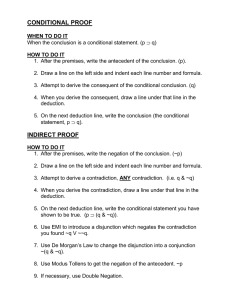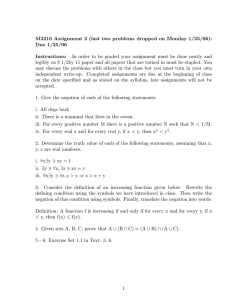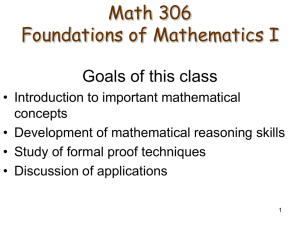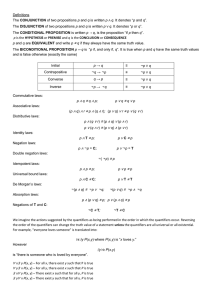Deduction Policies: Acceptable Shortcuts
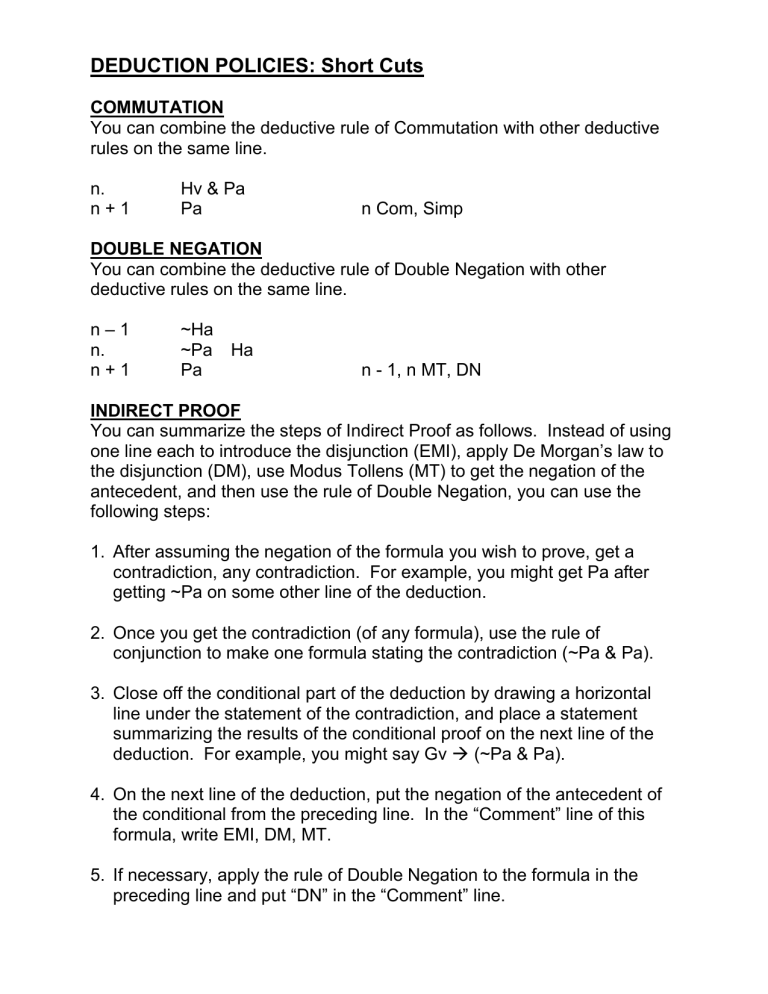
DEDUCTION POLICIES: Short Cuts
COMMUTATION
You can combine the deductive rule of Commutation with other deductive rules on the same line. n. Hv & Pa n + 1 Pa n Com, Simp
DOUBLE NEGATION
You can combine the deductive rule of Double Negation with other deductive rules on the same line. n – 1 n. n + 1
~Ha
~Pa Ha
Pa n - 1, n MT, DN
INDIRECT PROOF
You can summarize the steps of Indirect Proof as follows. Instead of using one line each to introduce the disjunction (EMI), apply De Morgan’s law to the disjunction (DM), use Modus Tollens (MT) to get the negation of the antecedent, and then use the rule of Double Negation, you can use the following steps:
1. After assuming the negation of the formula you wish to prove, get a contradiction, any contradiction. For example, you might get Pa after getting ~Pa on some other line of the deduction.
2. Once you get the contradiction (of any formula), use the rule of conjunction to make one formula stating the contradiction (~Pa & Pa).
3. Close off the conditional part of the deduction by drawing a horizontal line under the statement of the contradiction, and place a statement summarizing the results of the conditional proof on the next line of the deduction. For example, you might say Gv (~Pa & Pa).
4. On the next line of the deduction, put the negation of the antecedent of the conditional from the preceding line. In the “Comment” line of this formula, write EMI, DM, MT.
5. If necessary, apply the rule of Double Negation to the formula in the preceding line and put “DN” in the “Comment” line.
